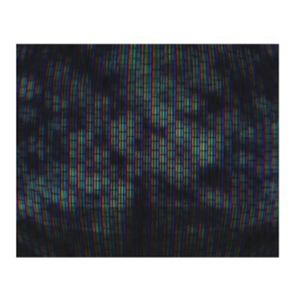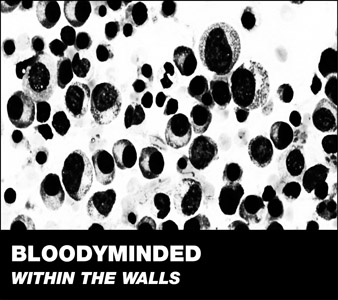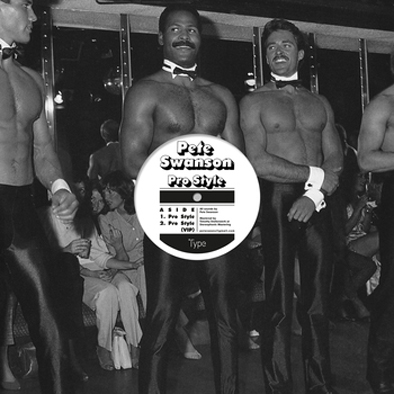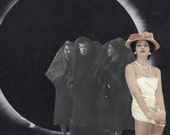- Administrator
- Albums and Singles
 Sebastian Banaszczyk has been strongly refining his craft in "sound recycling," or essentially utilizing limited, conceptually relevant recordings as the only basis for compositions. These two separate albums, for two distinctly different dramatic performances, have some consistencies between them, but each stand on their own as distinct works, as well as representing the next stage in Bionulor's discography.
Sebastian Banaszczyk has been strongly refining his craft in "sound recycling," or essentially utilizing limited, conceptually relevant recordings as the only basis for compositions. These two separate albums, for two distinctly different dramatic performances, have some consistencies between them, but each stand on their own as distinct works, as well as representing the next stage in Bionulor's discography.
Coriolanus is a modernized take on Shakespeare's drama, while SKAZAna is a biographical piece of a girl sexually abused by her stepfather, so both are drastically different in content, with neither being light works.Banaszczyk himself is an actor, and thus he approached both scores from a different perspective than just a composer would, which strengthens that bond between score and performance expertly.
Coriolanus is the longer of the two works at nearly 78 minutes and 26 untitled pieces, with the original source material extracted from classical instruments subjected to heavy processing and treatments.The use of traditional sounds and instruments subjected to modern composition fits well with the modernized approach to the theatrical work it was composed for as well.
While the actual instruments sampled and used remains ambiguous, hints of melody and music drift throughout the album, often times just out of focus or interrupted by outbursts of digital interference or noise.On the sixth and 12th pieces especially what almost sounds like a piano appears frequently. On the latter, Banaszczyk tosses in some raw, jarring noise bursts to keep things from becoming too comfortable or complacent.
The 14th piece, clocking in at a bit over ten minutes is definitely the lengthiest, and with that duration Banaszcyzk allows the heavily treated tones and textures to drift outward extensively, with the resulting composition sounding more in line with some of the earliest electro-acoustic and electronic composers in its slow build and nuance.
samples:

For SKAZAna, the source material is the voice of writer and actress Sylwia Oksiuta, and the sound recycling pulls it into a world that has pretty much no semblance of humanity about it.Much of the melody or hints of musicality from Coriolanus are gone, replaced instead with disembodied noises or mangled low bit rate samples.The second and third parts especially are all a series of stuttering, delayed clatters and haunting, frigid swells of sound bathed in what sounds like spring reverb.
This album is much more about texture and noise rather than tone, with echoing bits and windy passages of noise creating a cold, isolated atmosphere that fits the subject matter perfectly.Some pieces seem to capture Oksiuta's breath, processed and stretched into hissy static and harsh, noisy outbursts.It is only on two pieces (the 17th and 20th) that other sources are used, the former consisting of fragile, bell like noises and ringing sounds, while the latter is surprisingly traditional, with a slew of strings and orchestral instrumentation bringing the score to a rather conventional coda.
While I was not able to experience any of the visual components to these performances, Banaszczyk's audio accompaniment works well enough as stand alone compositions.The recurring themes and sounds that appear throughout is perhaps the best clue that these are not necessarily albums independent of their original application, but that is only rather noticeable on Coriolanus, and even then it is not repetitive to the point of being a problem.Having followed Bionulor's work roughly since the project's inception, it has been a strong trajectory of evolution, with each work showing more and more expertise in both his use of sounds and his overall compositions, and these two works are no different.
samples:
 
Read More
- Administrator
- Albums and Singles
 On their first album in seven years, the multinational power electronics band fronted by US legend Mark Solotroff manage to live up to the hype created from their less than prolific release schedule. Punishing, malicious, and appropriately deranged, Bloodyminded proves they have lost none of their potency.
On their first album in seven years, the multinational power electronics band fronted by US legend Mark Solotroff manage to live up to the hype created from their less than prolific release schedule. Punishing, malicious, and appropriately deranged, Bloodyminded proves they have lost none of their potency.
Solotroff and his team have consistently managed to elude the two major clichés of the power electronics genre: intentionally ambiguous politics and overdone sexual violence.While his former project Intrinsic Action may have delved a bit into the latter, Bloodyminded have continued to shed the adult bookstore sleaze elements and instead have shifted into more varied, esoteric topics and themes, often tied to a voyeuristic examination of human psychology. Within the Walls, for example, has lyrical content heavy on cell biology, without ever becoming completely clear as to its symbolism or meaning.
Live, Bloodyminded manages to convey an image that is self-aware enough at its own spectacle without overly diving into parody or satire.Solotroff's aggressive vocals delivered via a cobra's nest of intertwined microphones as the rest of the band thrashes about with antiquated plastic synths is definitely idiosyncratic (recent photos show an adoption of the pocket sized Korg Monotron synths, which just add to the absurdity).With the band's thrashing and leather clad wardrobes, it comes across as a perfect perversion of heavy metal tropes.On record though, this is not as overt but admittedly is not at all necessary to appreciate the music.
Insanity, another staple of the Bloodyminded repertoire is also insinuated quite often throughout the 13 songs on this disc.The consistent use of multiple vocalists aggressively screaming mantra-like lyrical passages amidst the constantly shifting and roaring waves of electronics is the best approximation of schizophrenia I can imagine.Even with the near melody that is buried deep in the mix, "Fatal Breath" demonstrates enough contrast with the razor sharp electronics and feedback, offset by a deep low end rumble that makes everything extremely disorienting.On "Circular Relations" the sense of mental disconnect is even more powerful, with Solotroff's up front screams offset by Isidro Reyes' backing Spanish vocals creating a confusing juxtaposition.
One of the hallmarks of power electronics is use of rhythm, which "Night Strikes" chooses to completely ignore.Other than the sustained electronics, growled vocals and feedback keep things as hyperkinetic and unpredictable as the best Masonna records do."Disintegration" features more of a structure in comparison, with blasts of white noise and deep pulsing electronics that convey some sense of order, but with a vocal delivery that is ridiculously over the top, but works quite well.
The most significant departures here come at the beginning and end of the record.Opener "All the Cities are Occupied" is all murky hums and idling machinery noise.Compared to what follows it, it has a meditative, understated sensibility to it that sets the mood for what follows.Even though it begins to get abrasive about half way through, the intermingling layers of synths are much more restrained in contrast to the remainder of the record.
The album closes on a cover of Locrian's "Inverted Ruins," a song that Solotroff did the vocals for on their Territories album.In the hands of Bloodyminded, it maintains much of its original moody vibe, all based on layers of synthesizer that never become too harsh or unstructured, but with a looser overall feel.Stripped of its original rock trappings, the underlying electronics of the original become more prominent and gives an entirely different sound that honestly feels a bit between traditional Bloodyminded and Solotroff's Anatomy of Habit project.The orderly arrangement seems to insinuate an inevitable explosive climax, but it never comes.
With Whitehouse seemingly done for good, Solotroff and crew have put together an album that covers similar ground and hits the same high points without sounding like an emulation or a tribute.Even after such a break, Bloodyminded is still a singular force in a genre with far too many sound alikes.Within the Walls is cerebral enough to fascinate, visceral enough to pummel, and manically unhinged enough to be completely engrossing and entertaining.
samples:
 
Read More
- Administrator
- Albums and Singles
 This EP pretty much picks up exactly where last year's fine Man With Potential left off, once again combining furiously thumping house beats with stuttering, skittering noise.  It is more of a tease than a substantial effort though, as it is basically just an amusing dalliance with the 12" single format, consisting of two versions of the title piece and a superior B-side.  Neither quite stands with the best songs on Potential and there is no evidence of a significant stylistic evolution, but Pro Style is an enjoyable distraction to tide me over while I await Swanson's next major work.
This EP pretty much picks up exactly where last year's fine Man With Potential left off, once again combining furiously thumping house beats with stuttering, skittering noise.  It is more of a tease than a substantial effort though, as it is basically just an amusing dalliance with the 12" single format, consisting of two versions of the title piece and a superior B-side.  Neither quite stands with the best songs on Potential and there is no evidence of a significant stylistic evolution, but Pro Style is an enjoyable distraction to tide me over while I await Swanson's next major work.
The opening version of "Pro Style" begins with roughly a minute of grinding mechanized noise, brooding synths, and host of distinctly Swanson-esque buzzes, bleeps, and stutters before the beat kicks in.  My hostility towards four-on-the-floor house beats has already been documented and that has not changed, so the unrelenting, unchanging thump is a bit of a sticking point for me.  Even so, I eventually warmed to the piece somewhat, as the combination of the minimal, deep bass groove and the absurdly maximalist wrongness surrounding it is damn endearing.  I especially enjoyed the impressive invasiveness of the crunching, metallic noises that appear in the middle–it feels like being at a rave in the midst of an active, functioning junkyard (albeit one that also seems to be embroiled in a ferocious laser battle).  The "VIP" version that follows is essentially more of the same, but longer, uglier, and crunchier.  Which is, of course, even better.
The lengthier "Do You Like Students?" is a bit more closely aligned to my taste though, as Swanson thankfully tones down his rib-cage rattling bass drum a bit.  Also, it scores something of a perverse, improbable hook in its eerie, two-note synth pattern.  It also boasts a somewhat more ambitious and musical synth bass line, which makes it feel more like an actual song once the beat kicks in (rather than an assault by percussion).  The sounds in the periphery, for the most part, remain consistent with those in "Pro Style," although the various bleeps, stutters, and clatters are buried a bit deeper in the mix.  It may not sound like much of a divergence, but cumulatively, it makes a big difference: "Do You Like Students?" sounds like a perfectly likable bit of retro-dance pop that has been remixed by an insane person and has gone badly off the rails.  That distinction makes it significantly more enjoyable than something that is basically a noise piece with a house beat added.
While the music itself is solid, the real appeal of Pro Style lies in its simultaneously kitschy and reverent format.  This is presumably as close to "fun" as a Pete Swanson release can get, so it is hard to be too critical–this is not meant as any sort of grand statement.  Unfortunately, I am congenitally dissatisfied, so I have to admit that I am a little disappointed that Swanson did not embrace the potential of the 12" dance single more fully.  For example, I bet a dub version of "Do You Like Students?" could be spectacular.  Also, it probably would have been extremely cool (or memorably, hilariously awful) to enlist an influential but forgotten techno or dub producer to rework "Pro Style" rather than presenting two somewhat similar versions.  So many missed opportunities.  Alas.  Perhaps Pete might just be getting started with this format though–it works well for him, as this is exactly the right amount of harsh noise-damaged techno I can enjoy in one dose.  I will keep my fingers crossed.  In any case, Pro Style is very likable (if minor) effort.
 
Read More
- Administrator
- Albums and Singles
 It has been a full decade since Drumm's last solo album on Mego (2002's massive and career-defining Sheer Hellish Miasma) and quite a bit has changed in the noise world since then.  While more modest in scope this time around (Relief is a 37-minute EP), Kevin's latest effort shows that an impressive evolution has occurred over those ten years, as he hits the perfect balance between his characteristic howling noise and his infrequently surfacing ambient side.  That comes as no surprise to me at all, but I was pleasantly taken aback by the sheer ferocity of Relief's noisy side.  Drumm is clearly not mellowing with age.
It has been a full decade since Drumm's last solo album on Mego (2002's massive and career-defining Sheer Hellish Miasma) and quite a bit has changed in the noise world since then.  While more modest in scope this time around (Relief is a 37-minute EP), Kevin's latest effort shows that an impressive evolution has occurred over those ten years, as he hits the perfect balance between his characteristic howling noise and his infrequently surfacing ambient side.  That comes as no surprise to me at all, but I was pleasantly taken aback by the sheer ferocity of Relief's noisy side.  Drumm is clearly not mellowing with age.
This EP has one extremely significant and immediately apparent characteristic that dwarfs all of its others, in that it is apologetically, spectacularly monolithic.  I can randomly skip to any one-second fragment of Relief and it will sound almost exactly the same any other fragment.  In fact, the only significant variance comes at the very end, and even that is pretty minor (the piece slowly fades out).  Otherwise, the piece is essentially a non-stop roar of roiling entropy from the second it starts until the very end.  That one-dimensionality only exists in a large-scale sense though, as Relief is far from dull: while the piece's bleak and floating synth motif remains a relatively static backbone, the underlying noise is apocalyptically explosive and immense.  There is a very good reason why Kevin is widely considered one of the world's greatest active noise artists, as his layers and layers of squalling static and white noise basically sound like the world is collapsing.
Drumm's ear-shredding avalanche sounds extremely clear and crisp and is both crushingly dense and bludgeoningly immediate.  If I had a grievance with this effort (which I do not), it would probably be that the melodic component does not evolve as the piece progresses, or maybe that the piece does not actually progress at all.  Instead, it more or less feels like being thrown into Drumm's scorching cacophony midstream and staying there until he feels like fading out.  However, the sheer enormity, violence, and microcosmic vibrancy of it all easily makes me forget about its compositional shortcomings and the forlorn melody is merely there to act as foil for that face-melting eruption, which it does beautifully.  Not so beautifully that Relief could be mistaken for anything other than a harsh noise album, of course, but the contrast it provides enhances the viciousness of the piece while simultaneously making it pretty listenable (by noise standards, anyway).  In lesser hands, such a sustained, unrelenting eruption would undoubtedly become quite wearisome at some point, but in Drumm's, it is a bracing, virtuosic tour de force.
(one caveat: It is not entirely rational that this is being released on vinyl, given that it is a single piece with no pauses or breaks of any kind.  I like vinyl as much as anyone, but sometimes that medium just does not make sense and this is definitely one of those times.)
 
Read More
- Scott Mckeating
- Albums and Singles
The constantly collapsing particles of 'Rats/Cats/Bats" sometimes cement to form loops that slowly melt and restructure. "An End to a Means" is a gritty crush of almost industrial noise and the result of the stress and strain of gears against gears. The crawling force of D/A A/D's immoveable object vs. unstoppable crawling force is an insistent punch and crumple. The grim bass of "Untitled" is ripped apart by sharp steel and then beaten to death by spades, the melodic stalled groove seeming in pain as it moves. There's a pretty heavy Wolf Eyes vibe across “(die) Hipster Scum," huge bass pulses that never launch into an assault but plough the song along. There are great sloughs of slow thrashing that leave the material rough and scavenged through maltreatment.
Read More
- Scott Mckeating
- Sound Bytes
- Matthew Jeanes
- Albums and Singles
Included on Deadverse Massive Vol. 1 are a handful of remixes, selections from their work with other artists, a couple of previously unreleased pieces, and the entire Streets All Amped EP originally released on vinyl by Ad Noiseam. Known mostly for their heavy as lead hip hop that goes over well with metal crowds, Dälek spend a considerable amount of time on other weird projects where their approach to cutting up and layering sound can air itself out. Although I'm always most impressed when the beats are hard and the lyrics are cutting through, when I hear pieces like "Music for ASM" or "3:46," I get a better idea of how the Dälek sound actually comes to life. This disc finally brings some of Dälek's more challenging and esoteric work together with some underappreciated gems.
Although I don't care for the collaboration with Velma on "Rouge," there are moments when the Deadverse production takes over and the track shines despite the vocal. Their remix of Techno Animal's "Megaton," (the first Dälek work I remember hearing) elevates the original and is thankfully included here as the ancient 12" is getting hard to find. The disc closes out with the four songs from Streets All Amped, which are all classic Dälek, mixing straight ahead lyrics with dusty grooves and layers of grime. Dälek are easily one of the most pioneering acts to come out of the hip hop world in years. For those unfamiliar with the accolades that the band gets overseas for playing in the experimental/noise sandbox, this disc is a welcome primer.
Read More
- Administrator
- Albums and Singles
Yeh approached his source material with a desire to be transparent, even literal, and to avoid straightforward narrative. The literal is there in the deceptively matter-of-fact track titles — “Drone”,“Voice”, “Shrinkwrap from Solo Saxophone CD”, “Two Guitars” — but knowing which sound source is buried beneath these tones does little to remove 1975‘s sense of enveloping mystery. This is sensual abstract music with a light touch, a confident minimalism that only reveals its unsettling depth, sharp corners, and playful malevolence with repeat listens.
For fans of Eliane Radigue, Hecker, Pita, or Kevin Drumm.
Born in Taiwan, and now based in Brooklyn NY, C. Spencer Yeh is the one constant of the “band”Burning Star Core, whose other members have included Mike Shiflet and Trevor Tremaine & Robert Beatty of Hair Police. He has collaborated with a staggeringly diverse range of artists, including John Wiese, Tony Conrad, New Humans w/ Vito Aconcci, Aaron Dilloway, Okkyung Lee, Evan Parker, Yellow Swans, Greg Kelley, Paul Flaherty, Don Deitrich (of Borbetomagus), and Chris Corsano (to name just a few)."
Read More
- Administrator
- Albums and Singles

Unofficial, hand-made second volume of Marissa's favorite covers.
01 Winter Lady [Leonard Cohen cover]
02 Learning to Fly [Tom Petty cover]
03 Birds [Neil Young cover]
04 Farewell Angelina [Bob Dylan cover]
05 You Don't Miss Your Water [William Bell cover]
06 The River [Bruce Springsteen cover]
07 Motel Blues [Loudon Wainwright III cover]
08 Distortions [Clinic cover]
09 Sara [Bob Dylan cover]
10 The Book of Love [The Magnetic Fields cover]
11 Avalanche [Leonard Cohen cover]
12 All My Trials [Traditional]
13 I'll Be Here in the Morning [Townes Van Zandt cover]
More info here.
Read More
- Administrator
- Albums and Singles
 One thing nobody will ever accuse Dave Pajo of is recording the samealbum twice. Fans of the polished, sparkling instrumental melodic songswill be a little taken aback with his latest full-lengther. Unlike the'Shark Cage' or 'Aerial M' albums, this one is much less a continuousconcept, with variations in both musical and production stylesthroughout the course of the 18+ minutes. Pajo picks up where he leftoff from the recent 'Papa M Sings' EP, singing on many tracks in astyle not completely foreign to fans of his close friend and oftencollaborator, Will Oldham. A trucking anthem, "Over Jordan" opens thedisc, charming, yet shabbily produced songs like "Tamu" could haveeasily been recorded on a tape recorded in the kitchen. IntoxicatingMiddle Eastern and electronic elements come into play (via tablas andsitar) on the stellar "Sabotage." By the time this song is reached, I'mhonestly thinking Pajo's probably the most fearless man in indierock—unafraid to pick up new instruments and do whatever he wishes withthem. The disc ends with "Northwest Passage," which echoes last album's"Arundel." This variation, however is alternately colored with acousticguitar, harmonica, piano and drums. Guest musicians like Tara JaneO'Neil and Will Oldham add to the complex tapestry, but at the end ofthe day, this is clearly more Pajo than anybody else. To top it off,the deluxe 24-page CD booklet features various appealing originalphotos from the man himself with a thick stock and glossy finish. Thefirst few listens may be uneasy but give it time to settle in.
One thing nobody will ever accuse Dave Pajo of is recording the samealbum twice. Fans of the polished, sparkling instrumental melodic songswill be a little taken aback with his latest full-lengther. Unlike the'Shark Cage' or 'Aerial M' albums, this one is much less a continuousconcept, with variations in both musical and production stylesthroughout the course of the 18+ minutes. Pajo picks up where he leftoff from the recent 'Papa M Sings' EP, singing on many tracks in astyle not completely foreign to fans of his close friend and oftencollaborator, Will Oldham. A trucking anthem, "Over Jordan" opens thedisc, charming, yet shabbily produced songs like "Tamu" could haveeasily been recorded on a tape recorded in the kitchen. IntoxicatingMiddle Eastern and electronic elements come into play (via tablas andsitar) on the stellar "Sabotage." By the time this song is reached, I'mhonestly thinking Pajo's probably the most fearless man in indierock—unafraid to pick up new instruments and do whatever he wishes withthem. The disc ends with "Northwest Passage," which echoes last album's"Arundel." This variation, however is alternately colored with acousticguitar, harmonica, piano and drums. Guest musicians like Tara JaneO'Neil and Will Oldham add to the complex tapestry, but at the end ofthe day, this is clearly more Pajo than anybody else. To top it off,the deluxe 24-page CD booklet features various appealing originalphotos from the man himself with a thick stock and glossy finish. Thefirst few listens may be uneasy but give it time to settle in.
samples:
Read More
- Administrator
- Albums and Singles
 Don't let the unpronouncable band name or low-tech cover put you off,this here's one of the best space-rock drone-pop records of the year.The five member group of D&D players includes Adam from Yume Bitsuand three members of Landing. It's patient, emotional, climactic andintense. Don't expect quietness however, as the barrage of guitarsenvelopes you like a cloud of the most potent marijuana smokeimaginable. You can get a contact high from this smoke however withoutdirect contact with the bong. Get comfortable on the livingroom couchin your rattiest flannel with a comfortable old blanket, turn the musicup really loud, stare up at the ceiling and daze for a few minutes.Minutes turn to hours, nightfall comes early and the lights go down allthroughout the house. Staring through glazed eyes the LED on your clockshows a time you can't figure which is AM or PM. Suddenly visions ofwalking through 4-foot drifts of neopolitan shaving cream enter yourhead. A plaid talking yak leads the way under the orange sky of anIndonesian sunset. Bubbles form and fail to burst, you stumble on LauraDern action figures and fall through a stitch in an oriental rug. Youwake with your mouth open, completely clothed, drool on the pillow andtwo fuzzy cats on your belly. The phone rang. Goddamnit.
Don't let the unpronouncable band name or low-tech cover put you off,this here's one of the best space-rock drone-pop records of the year.The five member group of D&D players includes Adam from Yume Bitsuand three members of Landing. It's patient, emotional, climactic andintense. Don't expect quietness however, as the barrage of guitarsenvelopes you like a cloud of the most potent marijuana smokeimaginable. You can get a contact high from this smoke however withoutdirect contact with the bong. Get comfortable on the livingroom couchin your rattiest flannel with a comfortable old blanket, turn the musicup really loud, stare up at the ceiling and daze for a few minutes.Minutes turn to hours, nightfall comes early and the lights go down allthroughout the house. Staring through glazed eyes the LED on your clockshows a time you can't figure which is AM or PM. Suddenly visions ofwalking through 4-foot drifts of neopolitan shaving cream enter yourhead. A plaid talking yak leads the way under the orange sky of anIndonesian sunset. Bubbles form and fail to burst, you stumble on LauraDern action figures and fall through a stitch in an oriental rug. Youwake with your mouth open, completely clothed, drool on the pillow andtwo fuzzy cats on your belly. The phone rang. Goddamnit.
samples:
Read More


